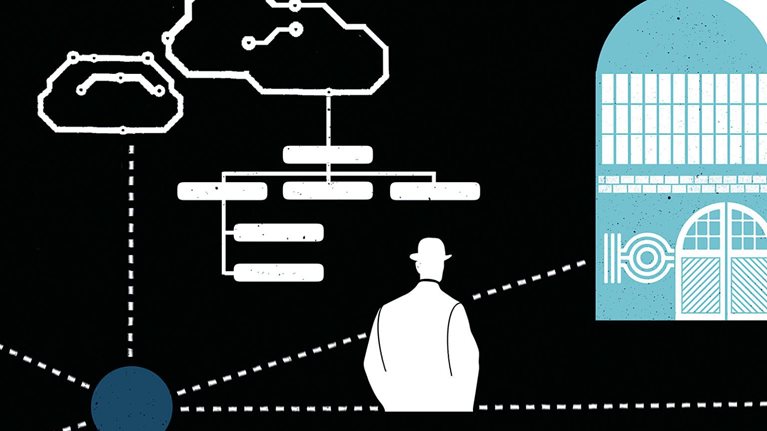Most venture-capital and growth-private-equity-backed software-as-a-service (SaaS) innovators that build business-productivity solutions ensure their product works in both the PC and mobile use case. In fact, a significant number have moved to a “mobile first” product and go-to-market mind-set. With this mobile-heavy use case in mind, we set out to gain a better understanding of best practices and success factors for early-stage SaaS business models that include a significant or predominate mobile use case.
To that end, we conducted a survey of mobile-enterprise app providers in the venture-capital and growth-private-equity-backed growth phases, sourced from Emergence Capital’s network of hundreds of leading start-ups in this space. Specifically, we focused our survey on SaaS productivity-tool players that have less than $100 million in annual recurring revenue. One of our main goals was to identify best practices and strategies that differentiated top performers from the pack. Our analysis of the survey data revealed many insights that will help venture-capital and growth-private-equity-backed B2B SaaS innovators make important decisions as they attempt to build and scale their mobile-enterprise offerings.
In this article, the first in a series, we’ll examine and compare the results for two groups of early-stage SaaS players: vertical-focused companies that provide targeted solutions for specific industries—for example, retail or healthcare—and companies with a more horizontal solution focus that design applications for specific cross-industry functional use cases, such as outside-sales success, service-force enablement, and team collaboration. While analyzing these groups, we wanted to answer two important strategic questions: how mobile-enterprise companies should target customers and what value propositions and go-to-market strategies are most effective.
Do horizontal- or vertical-focused companies reach higher annual contract value?
Our survey uncovered some striking differences in value extracted per customer for mobile-enterprise start-ups, depending on whether they had a vertical- or a horizontal-oriented value proposition. Of the companies in our survey with a vertical-oriented value proposition, 38 percent had annual contract values (ACVs) of more than $100,000 per customer—compared with 4 percent of companies with a horizontal focus (exhibit). By contrast, only 12 percent of vertical-oriented companies had ACVs lower than $1,000 per customer—compared with 35 percent of horizontal-focused companies.

When we examined the value propositions for vertical and horizontal players, we found that both emphasized productivity and revenue enhancement during go-to-market efforts—tailored, of course, for their target audience. With such similar approaches to customers, how did vertical players end up with significantly higher revenue? Two factors may explain this.
1. Greater value capture
Our survey asked mobile-app providers to estimate the average revenue they typically received for each installed application. The results showed that 47 percent of companies with vertically focused value propositions fell into our highest revenue category (more than $500 per installed application), compared with 15 percent of horizontally focused companies. At the other end of the revenue scale, this pattern reversed: only 6 percent of vertically focused companies were in the lowest category ($1 to $50 per application), compared with 37 percent of horizontally focused companies.
We investigated pricing models to determine if they could explain these revenue differences. Our analysis showed that about 50 percent of horizontal and vertical companies offered free trials. However, the percentage of players following a “freemium” model was much higher for horizontal companies (50 percent) than for vertical companies (22 percent).
Under a freemium model, customers receive a core product at no cost but must pay extra if they want additional services. This strategy may be part of the observed lower value to players than the free-trial model, since it does not limit the period in which customers can obtain the core product for free. Another telling finding was that the percentage of companies that completely avoid either free trials or freemium products is much higher for vertical companies (about 50 percent) than for horizontal companies (about 23 percent).
2. More sales to top executives
Another observation is that vertically focused value propositions are more likely than companies with horizontally focused offerings to be purchased by top executives: vice presidents or C-level executives (80 percent versus 64 percent). It’s likely their organizations are larger and budgets are higher, supporting higher ACV and allowing for potentially larger per-user value capture by the SaaS vendor.

Would like to learn more about our High Tech Practice?
Most horizontal apps are used only for specific departments, and their buyers tend to be frontline or midlevel managers with more limited budgets and purchasing authority.
How should mobile-enterprise players react?
It appears start-ups with a vertically focused value proposition are able to land larger customers, price per user, and level of organization that buys. There may be useful implications for horizontally focused players: if they haven’t leveraged vertical or segment-specific value propositions, perhaps they have an opportunity to see some of the benefits vertical-first companies achieve. This could allow them to extract higher value from their customers through tighter segment-specific value propositions and messaging, which arm their go-to-market teams (marketing and sales) to convey value in a more differentiated way.
In fact, as they scale, many software companies create different playbooks by segment or vertical and equip their sales forces to differentiate their messaging. We have observed firsthand in our client work that this benefit is achievable: horizontal early-stage SaaS offerings that build segment-specific value propositions and go-to-market messaging will likely see significantly better customer-acquisition efficiency.
Even those companies that already offer vertical products may need to adjust their approach to capture more value. For instance, mobile-app providers should have a clear value proposition and differentiated messaging for each vertical product, as well as specific playbooks for each vertical.


